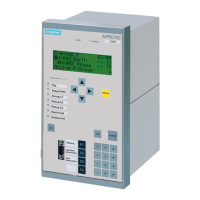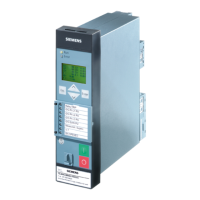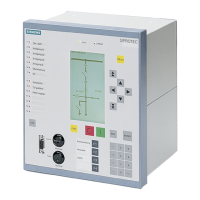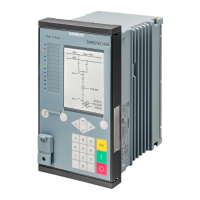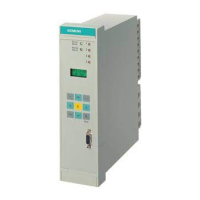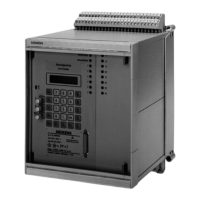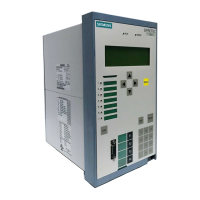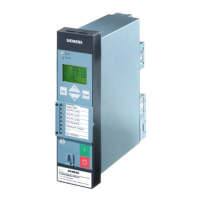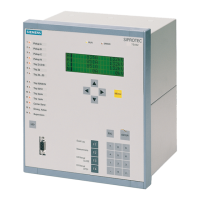2.1 General
29
7SD610 Manual
C53000-G1176-C145-4
The available protection and supplementary functions can be configured as Enabled
or Disabled. For some functions, a choice may be presented between several
options which are explained below.
Functions configured as Disabled are not processed by the 7SD610. There are no
indications, and corresponding settings (functions, limit values) are not displayed
during setting.
Note
The functions and default settings available depend on the order variant of the device.
2.1.1.2 Setting Notes
Configuring the
functional scope
The scope of functions with the available options is set in the Functional Scope dialog
box to match plant requirements.
Most settings are self-explaining. The special cases
are described below.
Special Cases If use of the setting group changeover function is desired, address 103 Grp Chge
OPTION should be set to Enabled. In this case, up to four different groups of settings
may be changed quickly and easily during device operation (see also Section 2.1.3).
With the setting Disabled only one parameter group is available.
Address 110 Trip mode is only valid for devices that can trip single-pole or three-
pole. Set 1-/3pole to enable also single-pole tripping, i.e. if you want to utilise single-
pole or single-pole/three-pole automatic reclosure. This requires that an internal auto-
matic reclosure function exists or that an external reclosing device is used. Further-
more, the circuit breaker must be capable of single-pole tripping.
Note
If you have changed address 110, save your changes first via OK and reopen the
dialog box since the other setting options depend on the selection in address 110.
The differential protection function DIFF.PROTECTION (address 112) as a main func-
tion of the device should always be Enabled. This also implies the supplementary
functions of the differential protection such as breaker intertrip.
The Direct Local Trip (address 122 DTT Direct Trip) is a command that is initiated
from an external device for tripping the local circuit breaker.
At address 126 Back-Up O/C you can set the characteristic group which the time
overcurrent protection uses for operation. In addition to the definite-time overcurrent
protection (definite time) an inverse-time overcurrent protection can be configured that
either operates according to an IEC characteristic (TOC IEC) or to an ANSI charac-
teristic (TOC ANSI). This selection is independent of whether the time overcurrent pro-
tection is intended to operate as emergency protection (only in case of protection com-
munication failure) or as independent backup protection. Wit device variants with
directional time overcurrent protection (MLFB position 14 = R or S) you have an addi-
tional directional definite-time overcurrent stage and a directional current dependent
inverse-time stage available to you. The characteristic curves for both inverse-time
www . ElectricalPartManuals . com
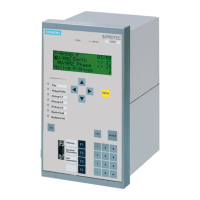
